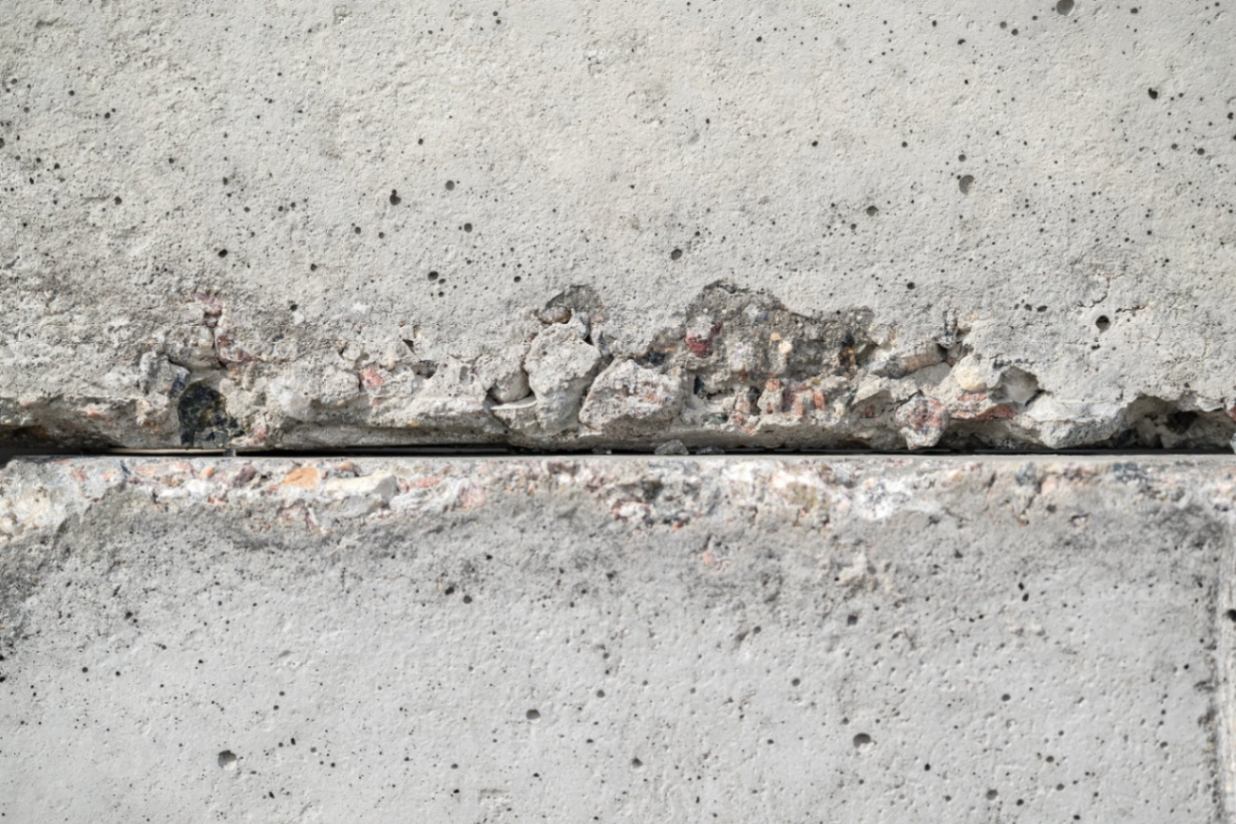When it comes to concrete structures, understanding the significance of expansion joints is essential. These components are designed to absorb thermal movements, preventing cracks and ensuring structural integrity. Without proper attention to their placement and function, you risk costly repairs and potential failures. As you explore the intricacies of expansion joints, consider the various types and installation techniques that can improve your project’s durability and performance. What factors might impact their effectiveness?

Key Takeaways
- Expansion joints accommodate temperature-induced expansion and contraction, preventing cracking and structural damage in concrete.
- Properly spaced joints ensure structural integrity by managing thermal movements and reducing stress concentrations.
- The choice of materials, like rubber or metal, affects the joint’s flexibility and durability for specific applications.
- Regular inspection and maintenance of expansion joints are crucial to prevent water infiltration and corrosion, enhancing longevity.
- Neglecting expansion joints can lead to costly repairs and significant structural issues over time.
Understanding Expansion Joints and Their Function
When constructing concrete structures, understanding expansion joints and their function is vital, as they play an important role in accommodating the natural expansion and contraction of concrete due to temperature changes.
There are several expansion joint types, including compression joints, sliding joints, and modular joints, each designed for specific applications and movement allowances. Selecting the appropriate type guarantees structural integrity and longevity.
Additionally, joint sealants are essential for preventing water infiltration and debris accumulation within joints, effectively enhancing durability. These sealants must be compatible with the expansion joint materials and capable of enduring environmental stresses.
The Importance of Expansion Joints in Concrete Structures
While concrete is a robust material, it’s not immune to the stresses caused by temperature fluctuations and moisture changes. This is why expansion joints are essential in concrete structures. They absorb movements, preventing cracking and structural damage.
When you’re considering design considerations, it’s vital to factor in the location and spacing of these joints to effectively manage thermal expansion and contraction. However, you might encounter installation challenges, such as ensuring proper alignment and maintaining joint integrity throughout the construction process.
Neglecting these elements can lead to costly repairs down the line. By prioritizing the incorporation of expansion joints, you improve the longevity and durability of your concrete structures, safeguarding your investment against the inevitable changes in environmental conditions.
Types of Expansion Joints Used in Construction
Expansion joints play an important role in managing the stresses that arise in concrete structures. You’ll encounter several types, each with unique characteristics.
Rubber joints offer flexibility and are ideal for accommodating movement, while metal joints provide durability and strength, suitable for heavy traffic areas.
Different sealant types can improve the effectiveness of these joints, ensuring they remain watertight and resistant to environmental factors.
Compression joints are particularly useful for absorbing stress from thermal expansion and contraction.
When determining joint spacing, consider the specific movement capabilities of each joint type, as proper spacing is essential to prevent cracking and maintain structural integrity.
Selecting the right expansion joint is critical for the longevity of your concrete structures.
Factors That Affect the Need for Expansion Joints
When evaluating the need for expansion joints, you must consider temperature changes and their impact on concrete.
Fluctuations in temperature can cause significant expansion or contraction, affecting structural integrity.
Additionally, structural movement, whether due to settling or external loads, necessitates the inclusion of expansion joints to accommodate these forces effectively.
Temperature Changes Impact
Temperature changes considerably impact the need for expansion joints in concrete structures, as fluctuations in heat can cause the material to expand and contract.
When temperatures rise, concrete undergoes thermal expansion, increasing its volume. Conversely, during cooler months, thermal contraction occurs, leading to a decrease in size.
These seasonal fluctuations necessitate the incorporation of expansion joints to accommodate these movements without causing cracking or structural damage. If you neglect this factor, you risk compromising the integrity of the concrete, as repeated cycles of expansion and contraction can lead to stress accumulation.
Understanding the thermal behavior of concrete in relation to temperature variations is essential for ensuring the longevity and durability of your structures. Expansion joints are critical in managing these thermal dynamics effectively.
Structural Movement Considerations
A variety of structural movement factors can greatly influence the necessity for expansion joints in concrete.
You’ll need to evaluate temperature fluctuations, moisture changes, and loading conditions, as these can all affect the concrete’s behavior. Each factor contributes to the overall structural integrity of the system, and without proper movement tolerance, you risk cracking or failure.
For instance, as temperatures rise or fall, concrete expands or contracts, requiring expansion joints to absorb these movements. Additionally, the weight of the structure and external loads can induce flexural stresses, further emphasizing the need for careful placement of joints.
Proper Installation Techniques for Expansion Joints
When installing expansion joints, selecting the right materials is essential for peak performance.
You’ll want to follow a precise step-by-step guide to guarantee proper placement and functionality.
Additionally, being aware of common mistakes can save you time and prevent costly repairs down the line.
Material Selection Considerations
Selecting the right materials for expansion joints is critical to guarantee their long-term performance and durability. You need to evaluate the material properties, such as elasticity, tensile strength, and resistance to environmental factors, ensuring they can handle the anticipated movements and stresses.
Additionally, joint compatibility is essential; the materials must effectively bond with both the concrete and surrounding elements to prevent premature failure. Consider factors like thermal expansion and contraction, as well as potential chemical exposure, when making your choices.
Furthermore, selecting materials that can accommodate the specific conditions of your project, such as moisture levels and temperature fluctuations, will improve the overall effectiveness of the expansion joints. Prioritizing these considerations will lead to a more resilient concrete structure.
Installation Step-by-Step Guide
Properly installing expansion joints is essential for guaranteeing their effectiveness and longevity in concrete structures.
Begin by identifying the locations where joints are needed, considering factors like potential movement and temperature fluctuations. Use appropriate installation tools, such as a trowel and level, to create precise joint configurations.
Next, clean the joint area thoroughly to remove debris that may affect adhesion. Apply a suitable joint sealing material, following the manufacturer’s guidelines for application thickness and curing time. Ascertain proper alignment and positioning before the material sets.
After the installation, monitor the joints for proper performance, checking for any gaps or deterioration. Regular inspection will help maintain the integrity of the structure and extend the lifespan of the expansion joints.
Common Mistakes to Avoid
While installing expansion joints, it’s crucial to avoid common pitfalls that can compromise their functionality. One major mistake is inadequate spacing between joints. This can lead to increased stress on the concrete, causing cracking and failure. Make certain to follow manufacturer recommendations and local codes for spacing requirements.
Another common installation error is improperly aligning the joint, which can create uneven surfaces and hinder performance. Verify that you’re using the correct materials compatible with your concrete type, as incorrect choices can lead to premature deterioration.
Finally, don’t forget to account for temperature variations during installation; this can affect expansion and contraction capabilities. By avoiding these mistakes, you’ll improve the longevity and effectiveness of your expansion joints.
Common Issues Caused by Improper Use of Expansion Joints
Improper use of expansion joints can lead to significant structural issues, often manifesting as cracks, displacement, or even structural failure.
When you neglect proper placement, you’ll notice distinct cracking patterns that signal stress concentrations. These patterns can propagate over time, exacerbating damage and increasing repair costs.
Additionally, poorly maintained or improperly sealed joints can allow water infiltration, leading to corrosion of reinforcing steel and compromising the concrete’s integrity. This moisture can also contribute to freeze-thaw damage, further worsening the situation.
Ultimately, addressing these issues early is vital to maintaining the structural soundness of your concrete. Prioritizing correct installation and monitoring will help you avoid these common pitfalls and extend the lifespan of your concrete structures.
Maintenance and Inspection of Expansion Joints for Longevity
Addressing issues caused by improper use of expansion joints is just the beginning; ongoing maintenance and regular inspection are essential for ensuring their longevity.
You should establish a thorough maintenance schedule that includes routine cleaning and monitoring for signs of wear or damage.
Employ effective inspection techniques, such as visual assessments and non-destructive testing, to identify potential problems early. Document your findings to track the condition of the joints over time.
Additionally, consider seasonal inspections, especially in regions with extreme weather fluctuations, as temperature changes can greatly affect joint performance.
Frequently Asked Questions
Can Expansion Joints Be Used in Both Concrete and Asphalt Surfaces?
Yes, you can use expansion joints in both concrete and asphalt surfaces. Asphalt expansion joints provide joint flexibility, accommodating thermal movements and preventing cracking, ensuring longevity and structural integrity in various applications across surfaces.
How Often Should Expansion Joints Be Inspected for Wear and Tear?
You should inspect expansion joints every six months for wear indicators. Regular inspections help identify potential issues early, ensuring the joints remain functional and effective in accommodating movement, ultimately extending the lifespan of your surfaces.
What Materials Are Commonly Used for Expansion Joint Fillers?
You’ll find various filler material options for expansion joints, including foam, asphalt, and rubber. Each expansion joint type requires specific materials to accommodate movement while ensuring durability and effective performance in diverse environmental conditions.
Are There Specific Climates Where Expansion Joints Are More Critical?
Yes, in cold weather, materials contract, increasing stress, while in hot weather, they expand considerably. You’ll find that expansion joints are critical in both climates to accommodate these changes and prevent structural damage.
Can I Install Expansion Joints Myself, or Should I Hire a Professional?
You can consider DIY installation if you’re experienced, but professional recommendations are often better for ensuring proper placement and material choice. Missteps can lead to costly repairs, so weigh your skills against the project’s complexity.
Conclusion
In summary, prioritizing expansion joints in concrete structures is fundamental for maintaining integrity and longevity. By accommodating thermal movements and preventing cracking, they play an essential role in safeguarding your investments. Understanding the types, installation techniques, and maintenance practices can greatly improve performance. Regular inspections and proper usage are imperative to avoid common issues that arise from neglect. Ultimately, effective management of expansion joints guarantees durability and resilience in your concrete applications, mitigating costly repairs down the line.
